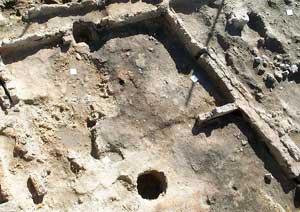
Settlement pattern and city layout
How were Vaccean cities?
The Vaccean territory held several large urban centers, or oppida, measuring between 15 and 20 hectares on average and comprising several thousand people each. Travel time between cities was around one or two days, meaning that each was an independent city-state.
The complex social structure of these cities, led by a warrior oligarchy, is reflected in the grave goods accompanying burials as well as in the accounts of Classical historians which refer to councils of elders and assemblies electing caudillos or deciding on a declaration of war. There are also the references from Tacitus and Appian to military campaigns not against the Vaccean people but against specific cities such as Cauca, Intercatia and Pallantia. These cities, of which the best known is Pintia, was built in sections: the primary residential area (frequently protected by adobe and wooden walls, plus moats), a slum outside the walls, artisan neighborhood, trash pits, cremation area, necropolis, quarries, sanctuary, cultives, and roads. The latter are the hardest to identify.
The interior of the residential area seems to be laid out uniformly, with intersecting streets creating blocks of rectangular houses. This shape proves the most rational for the use and distribution of space.

Ground floor of a Vaccean house in Pintia
The houses were built of adobe, wood and mud walls, with straw roofs and floors of compressed ground. Domestic activity centered on the hearth on the floor, with complementary areas for storage, food preparation, domestic ovens, textiles, etc.






